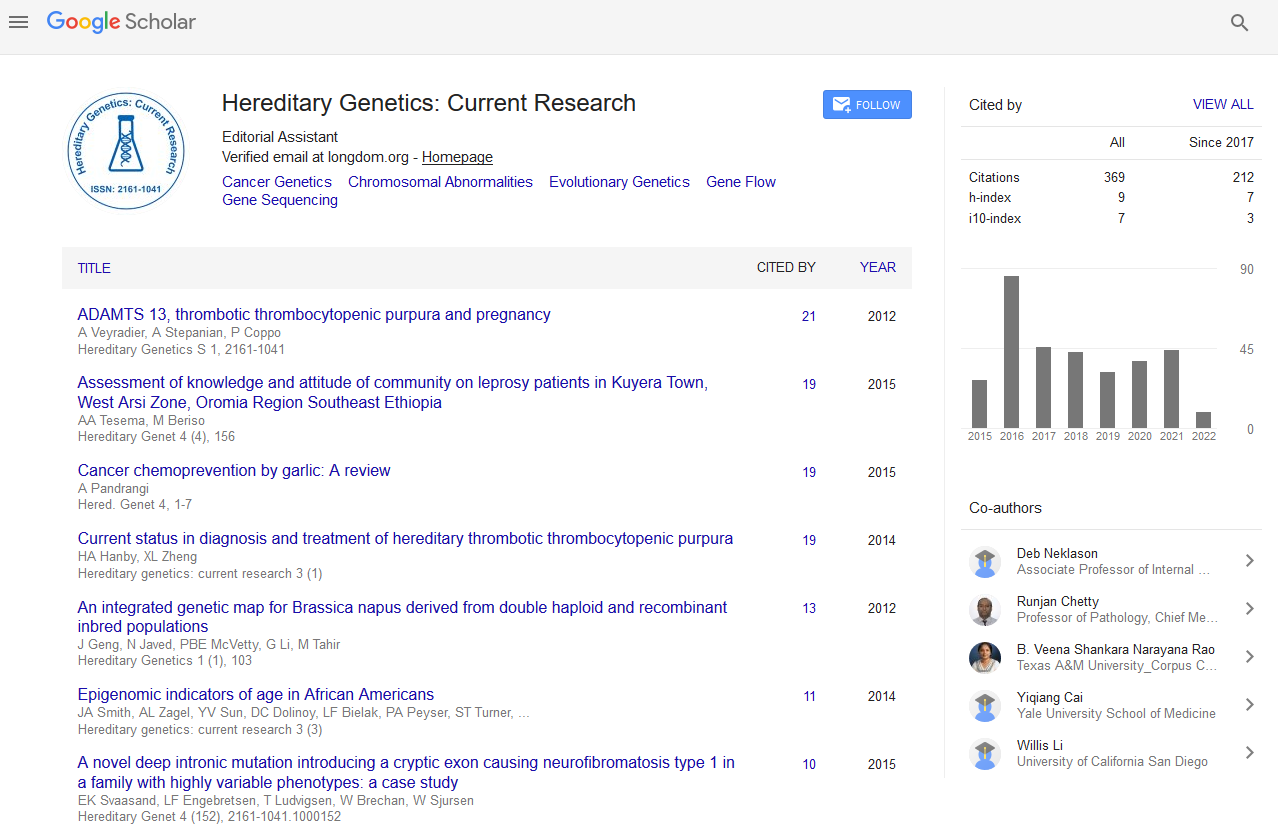PMC/PubMed Indexed Articles
Indexed In
- Open J Gate
- Genamics JournalSeek
- CiteFactor
- RefSeek
- Hamdard University
- EBSCO A-Z
- NSD - Norwegian Centre for Research Data
- OCLC- WorldCat
- Publons
- Geneva Foundation for Medical Education and Research
- Euro Pub
- Google Scholar
Useful Links
Share This Page
Journal Flyer

Open Access Journals
- Agri and Aquaculture
- Biochemistry
- Bioinformatics & Systems Biology
- Business & Management
- Chemistry
- Clinical Sciences
- Engineering
- Food & Nutrition
- General Science
- Genetics & Molecular Biology
- Immunology & Microbiology
- Medical Sciences
- Neuroscience & Psychology
- Nursing & Health Care
- Pharmaceutical Sciences
Abstract
The Second Case of Death in the Same Family from Chronic Renal Failure and Systemic Oxalosis as a Result of Primary Hyperoxaluria Type1
Background: Primary hyperoxaluria is a rare cause of chronic renal failure in children worldwide, but it is an important cause of chronic renal failure among children under 15 years old in Jenin district (Palestine) contributing about 67% of the causes of chronic renal failure among these children as was found in a previous study. The infantile form of hyperoxaluria manifests early with nephrocalcinosis and leads to end-stage renal failure in early childhood and the most severe form may lead to death during the first year of life.
Case presentation: We report the case of a 8-years old boy with a history of primary hyperoxaluria type1 since the age of three months presented with ascites, generalized edema, fever, myopathy, limited movement ability, general malaise, severe malnutrition, and respiratory difficulties. Clinical, laboratory, ultrasound, cardiac investigations revealed end-stage renal failure accompanied by heart failure, liver failure, liver cirrhosis, and systemic oxalosis. The patient was in a bad condition, stayed 4 days in the ICU and died in the fourth day from complications of systemic oxalosis.
Conclusion: History revealed that this is the second case of death in the same family from ESRD and complications of primary hyperoxaluria. The first death was for his brother since about 10 years who died at age of three months. It seems that the primary hyperoxaluria type 1 in this family is very severe and leads to end-stage renal disease and systemic oxalosis in early childhood despite conservative treatment. Since, sometimes, there are more than one case of primary hyperoxaluria in the same family, all children in the family with a history of primary hyperoxaluria - even who looks like healthy - must be screened for the disease because early diagnosis is important in treating strategies and delaying complications such as end-stage renal disease and systemic oxalosis.


